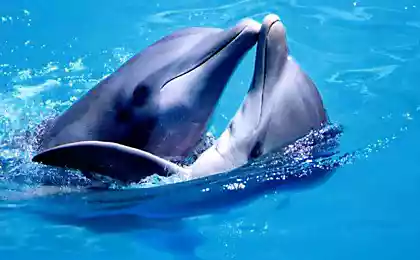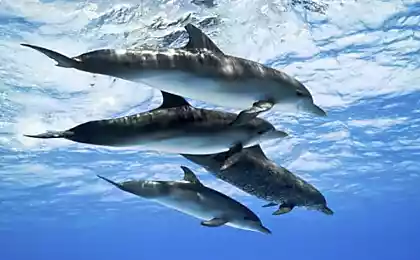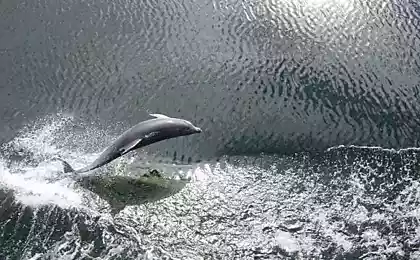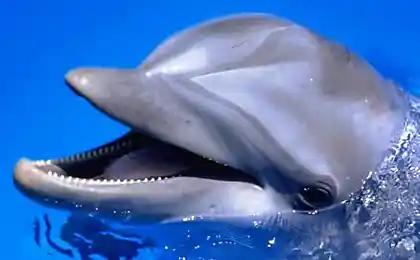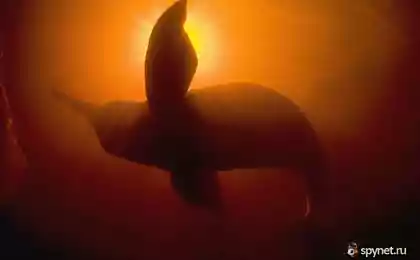260
The man who learned to understand dolphins: How a Biologist Deciphered Their Language

An incredible story of success and discovery
Cases of deciphering the language of animals are always amazing, but the story of a biologist who managed to understand the language of dolphins literally changes our ideas about the possibilities of interspecies communication. It all started with a fascination with marine life from a young scientist, whom we will call Dr. Mark. One day, while watching dolphins play, he wondered, "Is it possible they talk to each other like humans?" This question marked the beginning of a decade-long study, during which Mark developed a system for recording and analyzing the sounds produced by dolphins and came to sensational conclusions.
Using hydrophones — underwater microphones — Mark recorded how dolphins communicate with each other. Gradually, he began to highlight repetitive "words" and sound constructions. In collaboration with artificial intelligence engineers, Mark created a program capable of analyzing dolphin sounds and detecting patterns. The results exceeded all expectations: it turned out that dolphins use complex combinations of sounds to express different intentions and even emotions. Soon, scientists identified the sounds dolphins use to identify and interact with group members. This discovery was a sensation, showing that dolphins possess an analogue of human language adapted to their aquatic environment.
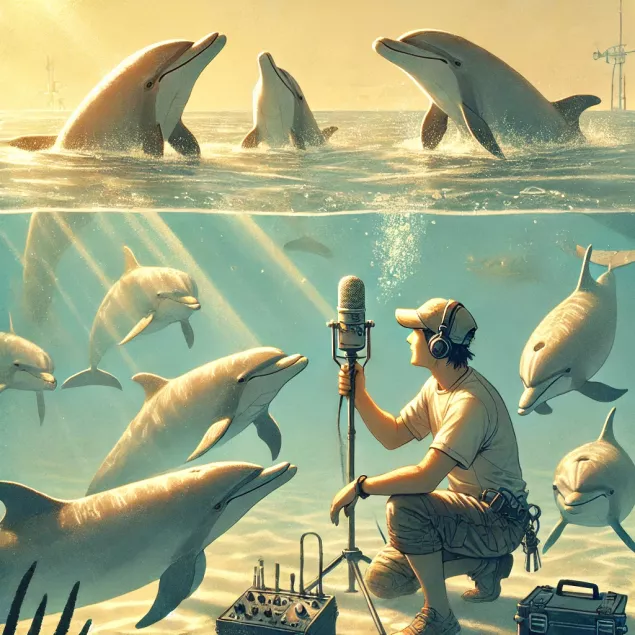
Practical examples of communication with dolphins
Once the basic words of the dolphin language were established, Mark began experimenting with communication. Some dolphins are able to remember sounds transmitted by scientists, and even repeat them. For example, a researcher used an audible signal to greet a particular dolphin and noticed that after a while the dolphin itself began to use this signal in response. Thus, the scientist obtained evidence not only of the ability of dolphins to remember “names”, but also their ability to associate sounds with specific people and objects.
Even more surprising was an experiment in which dolphins helped people find objects at the bottom of the sea, responding to instructions transmitted using conventional sounds. Mark and his team developed a system of commands to which dolphins responded with actions. For example, a certain signal meant “bring” and another signal meant “show”. Experimental dolphins quickly mastered these commands and began to show incredible understanding, perceiving signals and completing tasks. This experiment was not only a confirmation of the dolphins’ high cognitive ability, but also a testament to the fact that they really understand and respond to sound signals as commands.
How it changes our understanding of the animal kingdom
The discoveries of Mark and his team have greatly enhanced our knowledge of dolphin communication capabilities. They showed that these animals have a complex social structure similar to human communities, and their language is rich in emotional and cognitive cues. Dolphins are able to communicate information about themselves, their environment and the intentions of others, and their intelligence allows them to build complex interactions within the group and with the person.
Mark’s success has inspired research into interspecies communication. The question of animal language has become even more pressing, and research in this area is well underway. Today, thanks to the work of scientists like Mark, we know that the intelligence and communication abilities of animals are much more complex than previously thought. Dolphins are not only able to imitate humans, they have a unique culture of communication that humanity is just beginning to learn.
In the future, this field of science can give a new impetus to the development of ecological consciousness and cooperation with nature. Understanding the language of animals, and the skills they display, can transform our relationship to nature and society. If dolphins are able to understand us and even communicate with us, perhaps other species also have untapped cognitive abilities. Discoveries of this kind can give humanity new knowledge about the thinking and perception of other living beings on our planet.
Tips for developing your own intuition in communicating with animals
Mark’s research suggests that successful communication with animals requires developing intuition and attentiveness to their behavioral cues. Here are some tips for those who want to better understand their pets or connect with wild animals:
- Observe the behavior of animals. Pay attention to the animal’s behavior, movements, sounds, and reactions to your presence. By understanding body language, you can pick up many of the signals that animals use to express their intentions.
- Develop patience and calmness. Establishing trust with an animal takes time and a calm approach. The longer you stay with an animal and watch its behavior, the better you can understand its mood and desires.
- Use repetitive sounds or gestures. As in Mark's experiments, animals often remember certain sounds and gestures, associating them with specific actions. Create your “language” of interaction with the animal, such as a certain gesture to eat or an audible cue to walk.
- Learn to “listen” to your body. Dolphins, for example, sense signals through ultrasound. Humans may not have these abilities, but we can understand animal body language and energy if we pay attention not only to their sounds but also to nonverbal communication.
- Develop empathy.. Try to imagine how the animal feels. The ability to empathize and get used to an animal’s emotions helps to better understand its needs and possible reactions.
- Avoid sudden movements and loud noises. Many animals are alarmed or frightened by sudden sounds and movements. By keeping smooth and gentle, you can build trust and facilitate communication.
Mark’s story is proof that the boundaries of understanding between humans and animals may be much wider than previously thought. His work gives all of us the opportunity to better understand the language of nature and find new ways to communicate with the living things that surround us. After all, dolphins, like many other animals, remind us of the importance of nature, listening and learning, even from those who don’t speak our language.
Mystery of Lake Vostok: What is hidden under the 4-kilometer layer of Antarctic ice?
The $1,000 home of the future: How Indonesian Architect Created a Revolution in Construction



